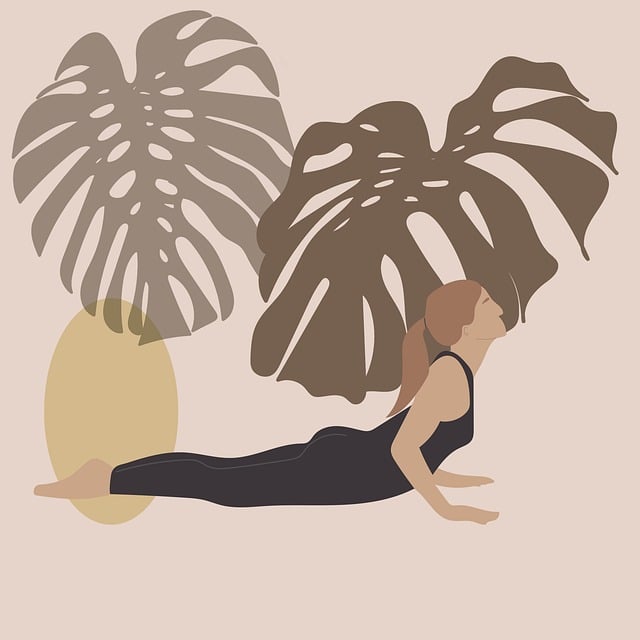
Discovering Pilates: A Guide to its Fitness Components
If you’re looking for a fresh way to stay fit and healthy, you may want to take a closer look at Pilates. This form of exercise has been gaining in popularity in recent years – and with good reason! Pilates is known for its ability to condition the entire body without putting too much strain on joints, which makes it ideal for everyone from seniors to high-performance athletes. In this article, we’ll look at some of the fitness components that make this exercise program so unique and highly effective. Let’s take a deeper dive into the world of discovering Pilates!
List of Content
- 1. Introducing Pilates: What You Need to Know
- 2. Benefits of Pilates: Improved Mobility and Strength
- 3. Fundamental Pilates Exercises: A Guide to Get Started
- 4. Pilates for Every Level: How to Progress with Skill
- 5. Pilates Equipment: What You Will Need
- 6. Ready to Give Pilates a Try? Here’s How to Start!
- You Ask, I answer

1. Introducing Pilates: What You Need to Know
Pilates is a system of exercises emphasizing the balanced development of the body through core strength, flexibility, and awareness in order to support efficient, graceful movement. It is designed to help people achieve a state of physical and mental well-being.
When doing Pilates, you focus less on repetitions and more on form, accuracy, and moving your body with precision. This will help develop muscle tone, improve posture, balance and coordination. You should also feel a growing sense of body awareness, and a calm, focused mind.
In order to get the most out of a Pilates workout, you should wear comfortable clothes and have a mat, which provides cushioning, traction, and stability. You may also want to use a Pilates ring, which will allow the practitioner to add resistance to specific movements, and a foam roller, which helps target deeper muscular tissues.
Benefits of Pilates:
- Improves physical and mental well-being
- Develops muscle tone
- Improves posture
- Helps increase flexibility
- Increases range of motion
- Enhances sports performance
- Reduces stress levels
Whether you’re looking to tone up from head to toe, build strength, or increase flexibility, Pilates is a great way to achieve your fitness goals!

2. Benefits of Pilates: Improved Mobility and Strength
Pilates is an exercise method that emphasizes on controlled, low-impact movements to help improve your body’s strength and mobility, thus improving your overall quality of life.
Improved Mobility: Pilates focuses on exercises to activate your core muscles and promote control over your movements. This activation helps improve your range of motion, helping you move better and more efficiently in your daily life. This could include improved back, shoulder, and hip mobility.
Strength: Pilates also helps improve your strength while minimizing the chances of developing muscular imbalances or joint pain. The movements help reinforce your posture and build muscular strength throughout your entire body, particularly in your core and leg muscles. This helps create a stable base for more intense activities like running, playing sports, and basic functional movements such as standing, walking, and bending.
Additional Benefits: Pilates is also beneficial for injury prevention and rehabilitation, as it helps correct muscular imbalances developed from other types of exercise. Benefits may also include:
- Improved balance, agility, and coordination
- Enhanced flexibility
- Rehabilitation of joint pain and muscle injuries
- Reduced stress and improved mental clarity
- Increased body awareness
3. Fundamental Pilates Exercises: A Guide to Get Started
Breathing Exercises
The first step in starting your Pilates practice is to learn how to breathe properly. Knowing how to properly breathe oxygenates your body and helps increase circulation. Focus on breathing from your diaphragm and lengthen your exhalations slowly. Some popular breathing exercises include belly breathing, 4-4 breaths, and Alternate Nostril Breathing.
The Hundred
The Hundred is a foundational Pilates exercise that works your entire body and incorporates breathing with motion. This exercise helps develop a strong core, increases your lung capacity, and can improve balance. Start by lying flat on your back, raise your legs at a 90 degree angle, and hug your knees into your chest. Inhale for five counts and then exhale for five counts as you pump your arms up and down for a total of 10 breaths. Repeat for a total of 10 times.
Leg Pulls
The Leg Pull exercise is great for strengthening the abdominals and teaching you how to align your pelvis. To begin, lie on your back and press your lower back into the mat. Prop your head up with your hands underneath your shoulders, and press the back of your legs firmly against the ground. Lift your feet up in the air and create a 90-degree angle with your lower body. Squeeze your core and pull your legs towards your chest. Hold this position for 5 seconds, and then slowly lower your feet back down. Repeat for 10 reps.
Corkscrew Exercise
The Corkscrew exercise is a great move to help the muscles in your lower back, obliques, and abdominals. Begin by lying on your back with your arms at your sides. Lift both legs to the ceiling and curl your upper body off the ground, engaging your core. Extend your arms over your head and twist your torso to the left. Hold this position for 10 seconds and then bring your arms back down. Repeat on the right side. Do 10 reps on each side.
4. Pilates for Every Level: How to Progress with Skill
Pilates is an exercise that’s suitable for all fitness levels, but it takes a bit of practice and dedication to really reap its benefits. Whether you’re just starting out or an experienced quite pro, there are plenty of ways to progress your skills and step up your practice.
Master the Basics: Before you attempt any of the more challenging poses, it’s important to master the basics first. Focus on getting the fundamentals down pat and take the time to develop form and strength. Aim to have healthy posture habits, strong core control, and efficient breathing.
Develop Fluidity: Once you’ve become comfortable with the fundamental Pilates poses, work to develop fluency and elegance in your practice. It’s this clarity of movement that allows you to progress in tone and precision. Start with mastering fluid transitions and try to make them look smoother.
Progress to Advanced Moves: Once you’ve got the basics down and have improved your fluency, you can start to progress into more advanced Pilates moves. This could involve exploring different apparatus, practicing more complex exercises, or even playing around with combinations of moves. Here are some progression ideas:
- Increase the number of reps and rounds for certain exercises
- Play with different variations of basic poses
- Introduce complex movements such as jumps and shifts
- Incorporate small, fast-paced exercises over larger, slower ones
Mix It Up: To really progress with your Pilates skills, it’s important to try different exercises and equipment every now and then. Make sure to evenly distribute your practice between apparatus, mat-based exercises, and strength training drills. A diverse practice builds strength, improves form, and keeps your practice interesting.
5. Pilates Equipment: What You Will Need
Mat
Pilates can be done with no equipment at all. But if you want to get the most out of your practice, you should invest in a mat. A dedicated Pilates mat is important for providing cushion and grip to help you stay in position during the different exercises. You may want to invest in a padded mat if you’ll be doing a lot of floorwork.
Specialized Apparatus
If you’re practicing at home, you’ll need to invest in a few pieces of specialized Pilates apparatus.
- A Pilates Reformer is a great investment. It’s a large piece of machinery with a sliding carriage and adjustable tension. Reformer exercises are different from mat exercises, so it provides a great way to challenge yourself and add variety to your routine.
- A Pilates Cadillac is a great tool for intermediate to advanced Pilates practitioners. It’s like a Reformer, but it has more features such as pulleys and straps that allow you to do a wider range of exercises. It’s also a great tool for developing stability and strength.
- A Pilates Chair is a great tool for exercising your legs and arms. It helps with coordination, balance, and flexibility.
- Pilates Mats and Balls are great tools for stretching, balance, and stabilization.
Small Accessories
You’ll need a few additional pieces to get the full effect of your Pilates practice.
- Resistance Bands, Rings, and Cords are great for adding resistance and challenge to your exercises.
- Pilates Foam Rollers are great for balance and support.
- Balance Balls, Disks, and Ped-O-Poles are great for challenging your balance and stability.
- Flexion Bars and Flex Bands are fantastic tools for developing better flexibility and range of motion.
Clothing and Footwear
More important than the equipment you purchase are the clothes and shoes you wear. Invest in comfortable, form-fitting clothing that won’t restrict your movement, and a pair of shoes with plenty of grip. It’s also a good idea to get a Pilates-specific outfit that accents your body and makes you look just as good as you feel after doing your practice.
6. Ready to Give Pilates a Try? Here’s How to Start!
Pilates is a great way to stretch and tone your body. It’s also great for improving posture and back health. If you’re looking to get started with Pilates, here are some tips to help you get started.
Start with the basics. Before you jump into the advanced moves, it’s a good idea to familiarize yourself with the basic movements of Pilates. Pilates exercises are done on a mat or a machine such as the Reformer. Learn how to do the core exercises such as the Hundred, Roll Up, and Single Leg Circles. Once you have mastered the basics, you’ll be ready to move on to more complex exercises.
Find the right instructor. It’s important to find an instructor who is knowledgeable and experienced in Pilates. A good instructor will be able to help you modify exercises to fit your individual needs. They will also provide you with feedback so that you can progress safely and effectively.
Be consistent. It takes time to see results from Pilates, so it’s important to be consistent with your practice. Aim for at least 2-3 Pilates sessions per week. After a few weeks, you’ll start to feel more flexible and strong. You’ll also start to see improvements in your posture and overall wellbeing.
Try online classes. If you’re new to Pilates, taking an online class is a great way to get started. There are many online Pilates classes available on streaming platforms such as YouTube and Vimeo. You can also find instructor-led classes on application such as Zoom. With online classes, you can learn Pilates in the comfort of your own home at your own pace.
You Ask, I answer
Q: What is Pilates?
A: Pilates is an exercise system developed in the early twentieth century. It combines physical exercises with breathing and relaxation techniques to promote balance and strength.
Q: What are the main fitness components of Pilates?
A: The main fitness components of Pilates include stretching, strengthening, postural alignment, increased flexibility, and improved posture. It can also help reduce stress and improve overall body awareness.
Q: What equipment do I need to do Pilates?
A: While many Pilates studios may have specialized equipment such as reformers, the main equipment used are a yoga or exercise mat and bands. Many basic Pilates exercises can be done without any specialized equipment.
Q: Are there any advantages to doing Pilates?
A: Yes! Pilates exercises can help improve posture, core stability, muscle tone, and joint mobility. It’s also a great way to reduce stress and improve overall flexibility.
Whether you’re looking for a way to target core muscles or to add mindfulness to your exercise routine, Pilates is a great option for fitness. Jumping into Pilates for the first time may be a bit intimidating, but with a little practice, you’ll find that the benefits and postural adjustments become second nature. Now that you know some of the benefits and components of Pilates, let’s get started!
